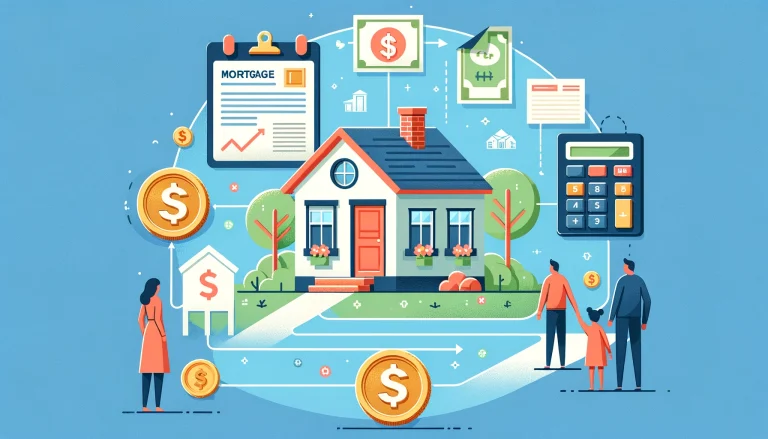Just how much home are you able to afford?
Perhaps one of the most common questions a first-time home buyer will ask is “How much home can I afford? ”
The clear answer, as a mortgage lender will let you know, is that “it depends”.
You will find no concrete rules for just how much home you are able to afford, or how large your mortgage can be.
In part, it is because mortgage lenders determine your maximum home purchase price differently from the manner in which you may possibly calculate it yourself using a mortgage calculator.
Both techniques are used to take today’s mortgage rates into consideration.
Let’s examine them.
Method 1: Allow the bank use DTI to establish your maximum purchase price
When you ask a bank to calculate your maximum home purchase price, the bank gives almost no consideration to your existing home hunt, or any properties which you’ve considered making an offer.
Instead of utilizing a specific sales price, the bank will only consider your annual income along with your annual debts.
It’s going to use that data to obtain the largest mortgage payment you might make without raising your debt-to-income (DTI) ratio above allowable maximums.
Most conventional loans impose a maximum DTI of 45%, apart from the HomeReady™ program, allowing up to 50% DTI.
FHA, VA, and USDA mortgage loans also impose a maximum DTI near 45%. Jumbo mortgages stop around 40% DTI.
Now, after the bank has found your maximum mortgage payment, it uses current mortgage rates to “back in” to a loan size, which informs you just how much you can borrow.
This process of determining how much home you are able to afford works very well, but also dangerous. It’s based on borrowing the absolute maximum that you can get approved, which will be frequently not advisable.
Banks can’t let you know what you ought to pay for a home — they can only explain to you what you could pay for a home.
Your debt-to-income is recognized as in two parts — the front-end ratio and the back-end ratio.
Debt-to-Income : Front-End Ratio
The first element of the debt-to-income ratio is the “front-end ratio”.
Front-end ratio compares the expected monthly housing payment to a buyer’s monthly income, where “housing payment” includes all of the following obligations :
- Monthly principal + interest payments
- Monthly real estate taxes due
- Monthly homeowners insurance due
- Monthly dues due to an association
There’s absolutely no maximum limit for a front-end ratio, but lenders prefer to see front-end DTI of 28% or less. Which means that banks prefer that 28% or less of your total monthly income be allotted to your housing payments.
You are still able to get approved with a front-end ratio above 28%, but it’s a little less usual.
Debt-to-Income: Back-End Ratio
The next component of debt-to-income ratio is the “back-end ratio”.
Back-end ratio compares not the monthly housing payments against a buyer’s monthly income, and all the monthly obligations, too.
Back-end ratio makes up about all of the following monthly obligations a home buyer might have:
- Monthly housing payment(s)
- Monthly minimum credit card payments
- Monthly child support or alimony
- Monthly car payments for a car loan or lease
- Monthly payments to an installment loan such as a timeshare
In general, banks want to see a back-end ratio of 36% or less, nevertheless, having a DTI over 36% will not disqualify your application for the loan automatically.
Method 2: Make your own monthly household budget
As a home buyer, you are able to depend on a bank to share with you just how much home you are able to afford, or you can figure it out on your own.
Most of the time, your bank will approve you for a far more expensive home than you intend to purchase. It is because banks will approve you to your maximum home price, which could generate more fees.
When you purchase at your maximum upper-limit, though, it doesn’t leave you with much cash for saving, investing or living — aside from paying taxes.
For that reason think about a more personal way of “How much home could i afford? ”.
To achieve this, first, determine the the very highest monthly payment you’d prefer to make each month. This will require planning and awareness of your household budget.
Then, utilizing a mortgage calculator, plug in your desired payment and today’s mortgage rates to obtain the loan size that sort of payment will afford.
For instance , if you budget for a monthly housing payment of $2,500 with two percent annually going to taxes and insurance, assuming the existing 30-year mortgage rate is 4%, the math “worked backwards” reveals a maximum home purchase price of $385,000.
This process is much better at holding you “on budget” when compared with letting a bank set your maximum purchase price.
What are today’s mortgage rates?
To answer “How much home can I afford? ”, eventually, needs a buyer to understand today’s mortgage rates. Mortgage rates affect monthly payments which, in turn, affect your budget.
Get today’s live mortgage rates now. Your social security number isn’t needed to get started, and all quotes come with use of your live mortgage credit scores.












